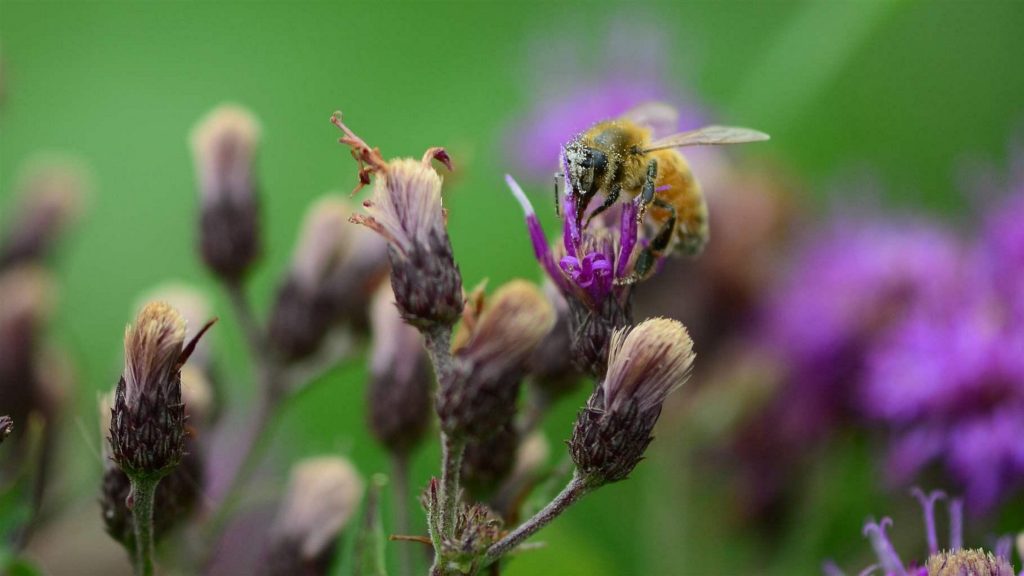Part of any ecologically sound garden plan involves making sure rich sources of nectar are available throughout the entire foraging season.
These blooms are easy to come by in the heart of summer, but keeping a steady stream of nectar in the landscape becomes more of a challenge this time of year.
As the blossoms of pollinator favorites like bee balm, milkweed, coreopsis and coneflowers fade away, a tall, striking plant called New York ironweed steps in to fill an important ecological role: providing nectar during the late summer and early fall days.
Tall and tough, the native New York ironweed (Vernonia noveborecensis) is an upright perennial wildflower with many stem leaves and clusters of gorgeous, deep purple disc florets.
The plants grow 4 to 8 feet tall with an average spread of 2 to 4 feet.
Although New York ironweed is indigenous to sunny, wet meadows, moist pastures and stream banks, it also tolerates clay soils, average, well-drained soils and even tolerates some drought.
It’s not impacted by the juglone chemical put off by walnut trees, so there are no concerns planting near Eastern black walnut trees, either. It’s not a picky plant!
Most popular late-August plant
In terms of an “it” plant for this time of year, Vernonia noveborecensis fits the bill. And if you’ve got one in your landscape, you likely already know it’s a magnet for butterflies, skippers, moths and native bees during that transitional period between summer and fall.
Monarch butterflies are frequent visitors, and the nectar helps power them up to build important fat stores for migration.
And don’t be surprised to find insectivorous birds also hanging around for late-summer meals. There’s usually lots of activity around a New York ironweed plant!
Black-capped chickadees and American goldfinches also love to feast on ironweed seeds, so consider letting the seed heads on the plant. (Just know it will happily spread to other parts of your yard, providing more plants for your pollinator friends — or ones you can share with your friends.)
Indigineous uses
According to the Price William Wildflower Society, American Indians used ironweed for medicinal purposes, making teas from leaves to treat female problems, including relief from childbirth pain. Tea made from the roots was used to address loose teeth and stomach ulcers.
Companion plants
New York ironweed can be striking on its own as a vertical accent, but also pairs well with fox sedge (Carex vulpinoidea), Joe pye weed (Eupatorium fistulosum), mistflower (Eupatorium coelestinum) and New Jersey tea (Ceanothus americanus). It’s also striking with native grasses like switchgrass (Panicum virgatum).




